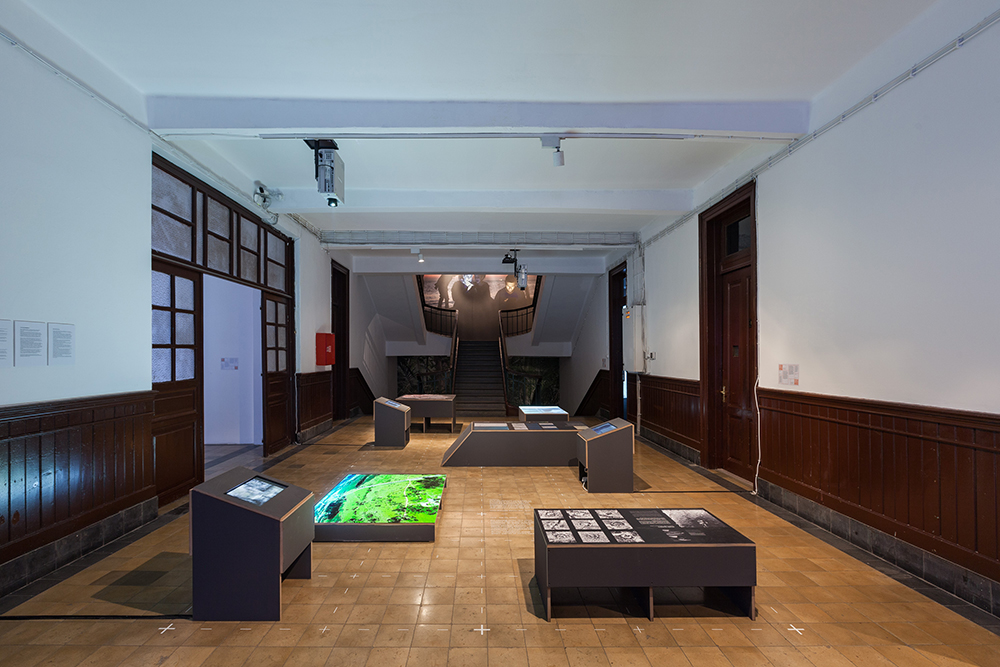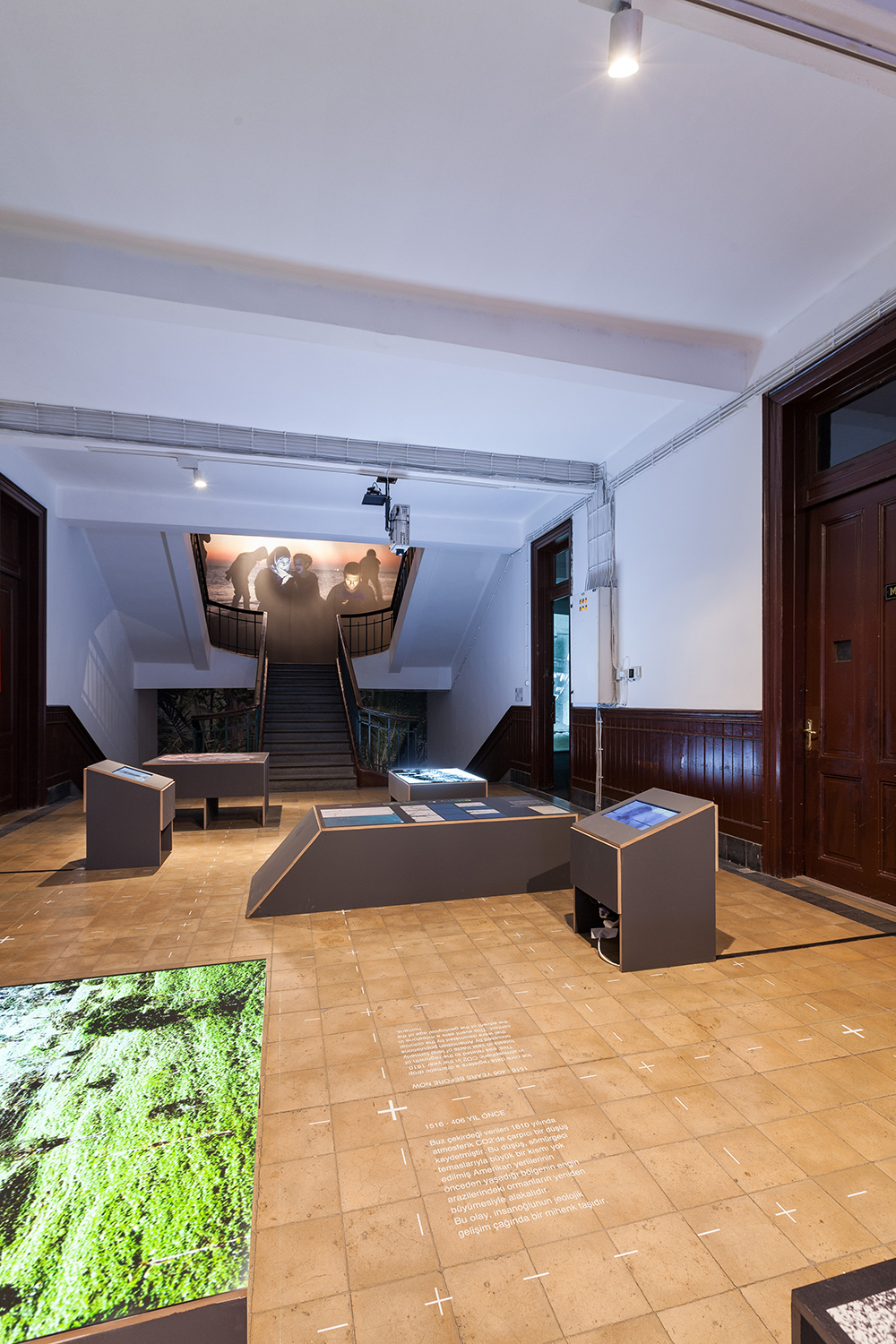Archaeology of Violence (The Forest as Design)
Paulo Tavares (Brazil) & Armin Linke (Germany)
Galata Greek Primary School

“Forests––particularly ‘tropical’––demarcate a threshold…against which the human condition is defined, representing both the place of humanity’s primeval state and its antithesis… Amazonia, the world’s greatest tropical forest…appears as the quintessential representation of the ‘natural realm’… … Constrained by the tropical environment, so the theory went, “primitive” societies did not develop the means to transform the land in meaningful ways… This perspective informed theories of social evolution that in turn served to legitimize the genocide of indigenous peoples. Recent archaeological findings are radically transforming this perception of Amazonia, showing that this image of nature is the product of colonial violence. The evidence tells that indigenous modes of inhabitation leave profound signatures in the landscape and play a remarkable function in shaping the forest ecology.” –PT

Archaeology of Violence (The Forest as Design) subverts the colonial understanding of the tropical forest as a completely natural landscape, a territory of un-humanized wilderness. The project reveals how the forest of Amazonia can be read as a multi-layered archaeological site full of almost imperceptible “ruins” that denote the prior habitation of humans, environmental forces, and other species. Far from the antithesis of human design, the Amazon forest becomes a hugely influential design project.

